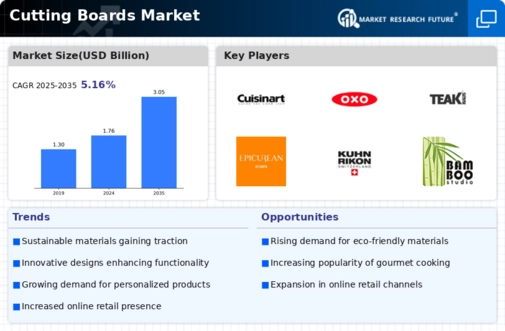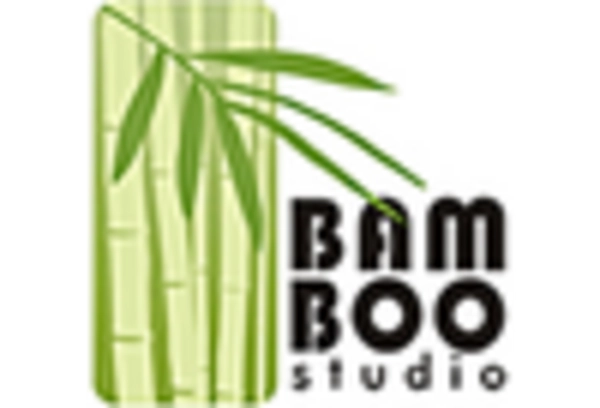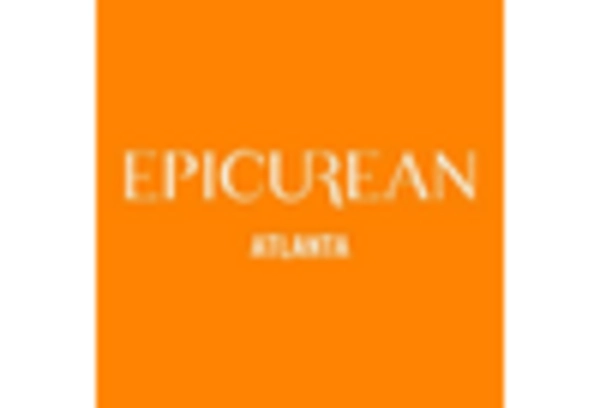The Cutting Boards Market is currently characterized by a dynamic competitive landscape, driven by innovation, sustainability, and consumer preferences for high-quality kitchenware. Key players such as John Boos & Co. (US), Epicurean (US), and OXO (US) are strategically positioned to leverage these trends. John Boos & Co. (US) focuses on premium wooden cutting boards, emphasizing craftsmanship and sustainability, which resonates with eco-conscious consumers. Epicurean (US) differentiates itself through its use of eco-friendly materials and innovative designs, appealing to a modern audience. OXO (US) adopts a more functional approach, integrating ergonomic designs and user-friendly features into its products, thereby enhancing the overall cooking experience. Collectively, these strategies contribute to a competitive environment that prioritizes quality and sustainability over mere price competition.
In terms of business tactics, companies are increasingly localizing manufacturing to reduce lead times and enhance supply chain efficiency. This trend is particularly evident in the Cutting Boards Market, which appears to be moderately fragmented, with several players vying for market share. The collective influence of key players is significant, as they not only set quality standards but also drive consumer expectations regarding sustainability and innovation.
In August 2025, John Boos & Co. (US) announced a partnership with a leading sustainable forestry organization to ensure that all wood used in their products is sourced from responsibly managed forests. This strategic move not only enhances their brand image but also aligns with the growing consumer demand for environmentally friendly products. By committing to sustainable sourcing, John Boos & Co. (US) positions itself as a leader in the eco-conscious segment of the market, potentially attracting a broader customer base.
In September 2025, Epicurean (US) launched a new line of cutting boards made from recycled materials, further solidifying its commitment to sustainability. This initiative not only showcases their innovative approach but also responds to the increasing consumer preference for products that minimize environmental impact. The introduction of this product line may enhance Epicurean's market share by appealing to environmentally aware consumers who prioritize sustainability in their purchasing decisions.
In October 2025, OXO (US) unveiled a new digital platform that allows consumers to customize their cutting boards with personalized engravings. This move reflects a growing trend towards personalization in consumer products, which could enhance customer loyalty and engagement. By integrating technology into their offerings, OXO (US) not only differentiates itself from competitors but also taps into the burgeoning market for customized kitchenware, potentially driving sales growth.
As of October 2025, the Cutting Boards Market is witnessing trends such as digitalization, sustainability, and the integration of technology into product offerings. Strategic alliances among companies are increasingly shaping the competitive landscape, fostering innovation and enhancing product differentiation. Looking ahead, it is likely that competitive differentiation will evolve, with a pronounced shift from price-based competition to a focus on innovation, technology, and supply chain reliability. Companies that can effectively leverage these trends will likely secure a competitive advantage in this evolving market.

















Leave a Comment